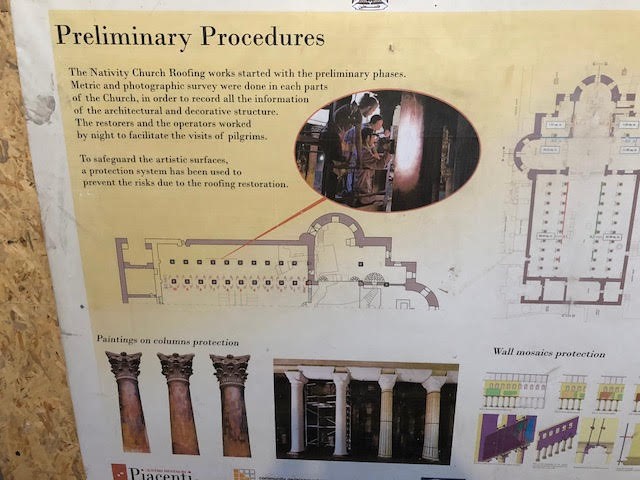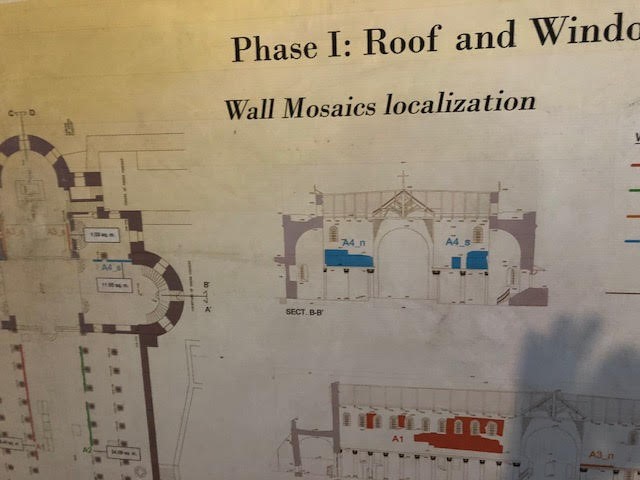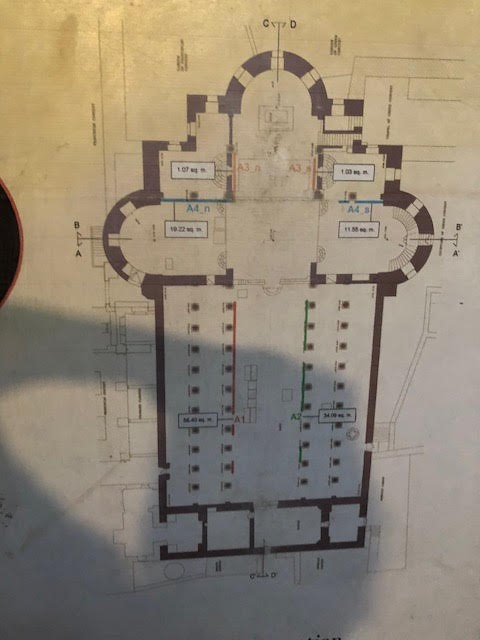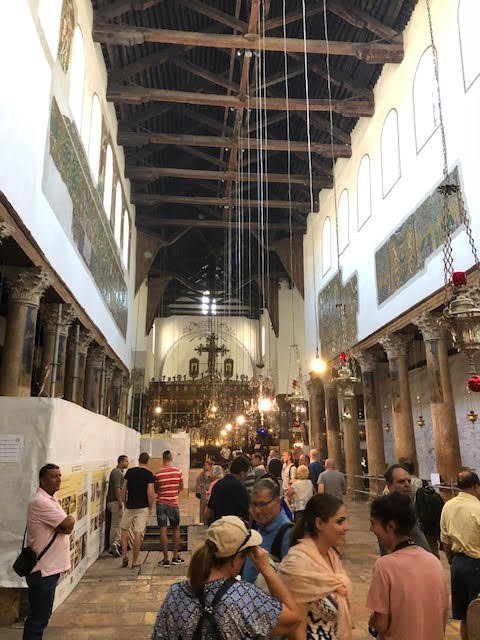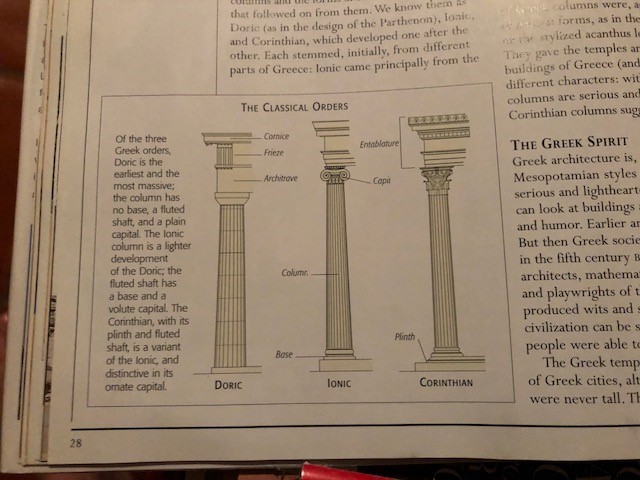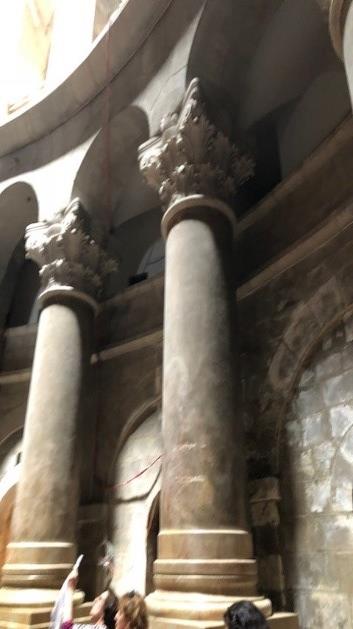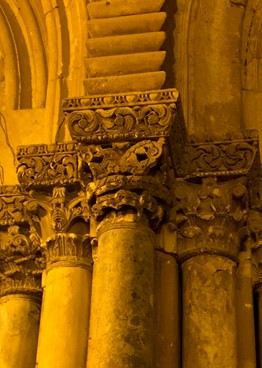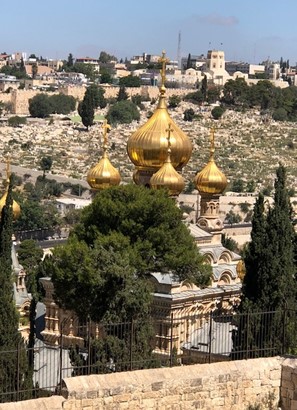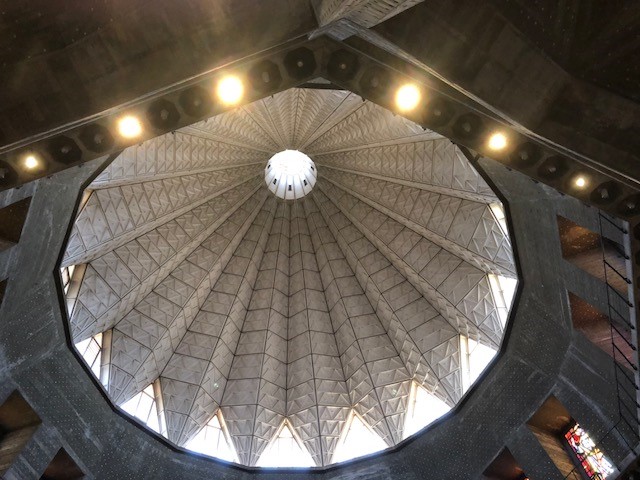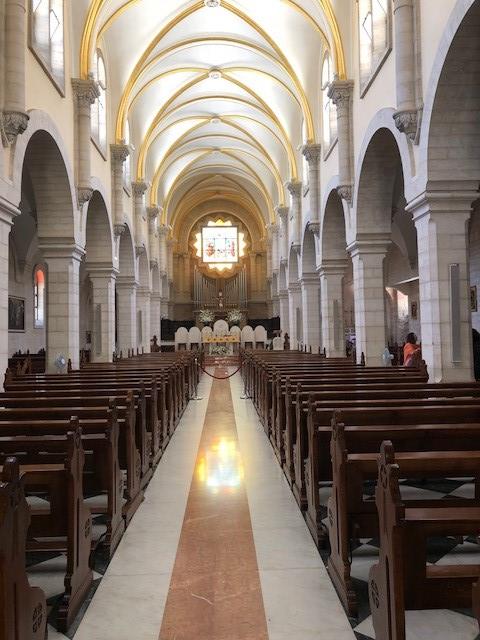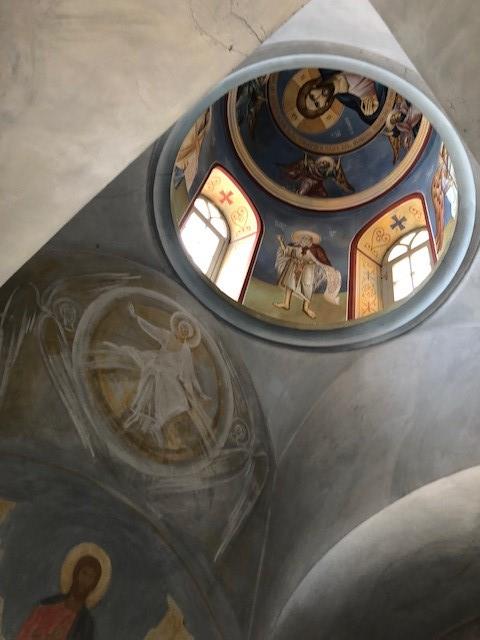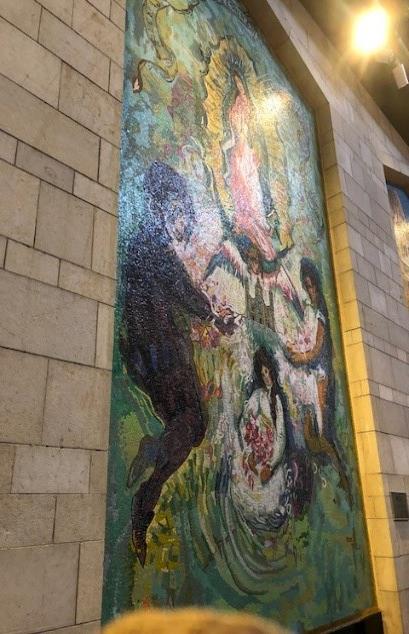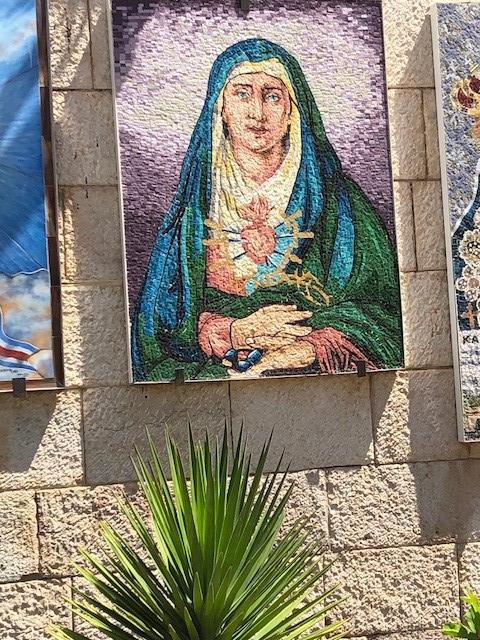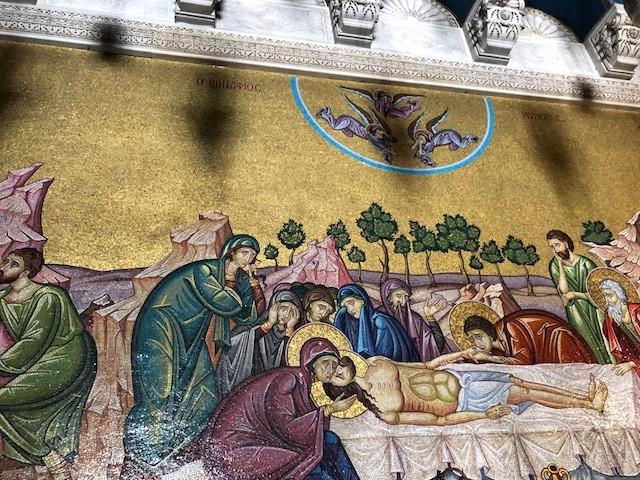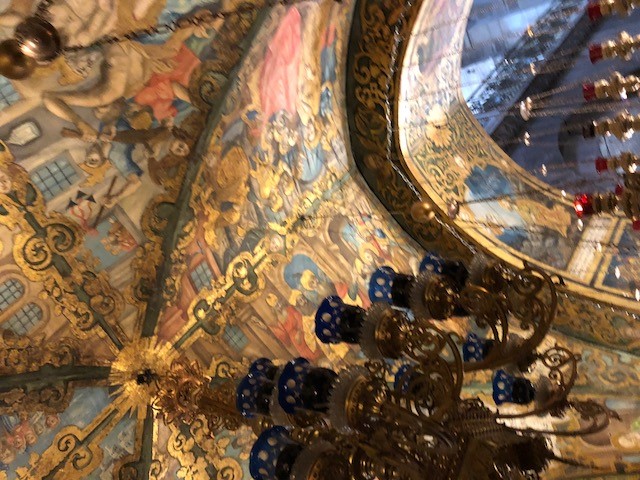Lucy Campbell and Barbara Opar, column editors
Column by Michelle Amirkhanian, freelance writer
As a child in Bible school I used to dream about swimming in the Dead Sea. Fortunately, that dream came true for me this summer. In June of 2018, I travelled on a pilgrimage with my Armenian church to visit a number of biblical sites and document their architectural history and culture.
In Jerusalem routines revolve around three religions sharing space on a daily basis. Minaret music plays calling Muslims to daily prayers, while Jewish residents are in black robes, women wear headscarves, and kids go to Temple to pray and read the Torah. This is what makes this place holy. The world knows there is a lot of politics in the Holy Land. I can only say that with every positive purpose about Jerusalem the dynamics of contemporary politics make it a paradox. For instance, currently, Christians cannot visit Bethlehem, where Jesus was born, due to politics over who has rights to the territory.
Cities in Israel near Tel Aviv like Haifa and Jaffa port on the Mediterranean are metropolitan and modern architecture is prominent. There exists a sharp contrast between old and new, or biblical and contemporary.
Restoration and/or historic conservation is being completed on many churches and holy sites throughout Jerusalem and Armenia. Archaeology is also applied to rescue tile floors, paintings and mosaics discovered behind deteriorating walls. Documentation of the art and architecture is shared here.
The Nativity Church
The Restoration of the Nativity Church is taking place in Israel. The process and plans were posted alongside the archaeological work, where tile was found underneath the excavated ground floor.
The Nativity Church exemplifies how to protect painting on columns and wall mosaics, and how to approach preservation needs.
Although there is an ongoing restoration project at The Nativity Church, the doors are open to the public. However scaffolds and walls are torn down, and visitors must envision the final outcome of the restoration project while avoiding closed off areas and floors in poor condition.
Another example of sites being restored. New findings are being discovered under the buildings of these holy sites.
The Classical Orders
Buildings feature the three Greek Orders of Doric, Ionic, and Corinthian columns. Some have paintings that require restoration and cleaning. These pictures are some of the columns I documented during my trip.
Photos of Corinthian column found in Jerusalem’s many holy edifices are provided below.
Dome of the Rock
Dome of the Rock in Jerusalem was restored by Byzantine architect Antonio Barluzzi (1884-1960). Over 25 structures Barluzzi completed have since been restored and rebuilt in the Holy Land. The Custodia Terrea Sanctae Franciscan missionaries’ site lists his completed projects. These sites would not be in existence had it not been for Barluzzi’s talents in Byzantine Architecture and restoration.
Dome of the Rock in Jerusalem restoration
Church of St. Mary Magdalene
The Church of the Holy Sepulchre
The Holy Sepulchre was quite moving. There is a keyholder that is there to open the gate in the morning and close the gate. The key is like a key during Biblical times and so are the doors. The courtyard of the Holy Sepulchre displays the platform where Jesus stood and was sentenced to crucifixion by Pontius Pilate and inside is the “Golgotha” or where the empty tomb of Jesus is established. The Greek Orthodox, Catholics and Armenian orthodox have points and designated quarter within the Holy Sepulchre. Also, the Coptic, Ethiopian Orthodox, and Syriacs have much smaller quarters in the Church. Also, there is a Jewish site within the Holy Sepulchre. Finally, the awesome Edicule was restored last year and is in a sense the central piece of the Holy Sepulchre.
The Edicule within the Holy Sepulchre
Fine Mastery of Byzantine Architecture
In the Holy Land pilgrims often notice opulence such as intricate mosaics, gold-plated paintings, Tiffany glass, and the creative awesome ceilings that are unapologetic of their existence. In visiting the Holy Land, I felt a strong connection to my religious beliefs which made the entire experience even more fulfilling.

 Study Architecture
Study Architecture  ProPEL
ProPEL 

